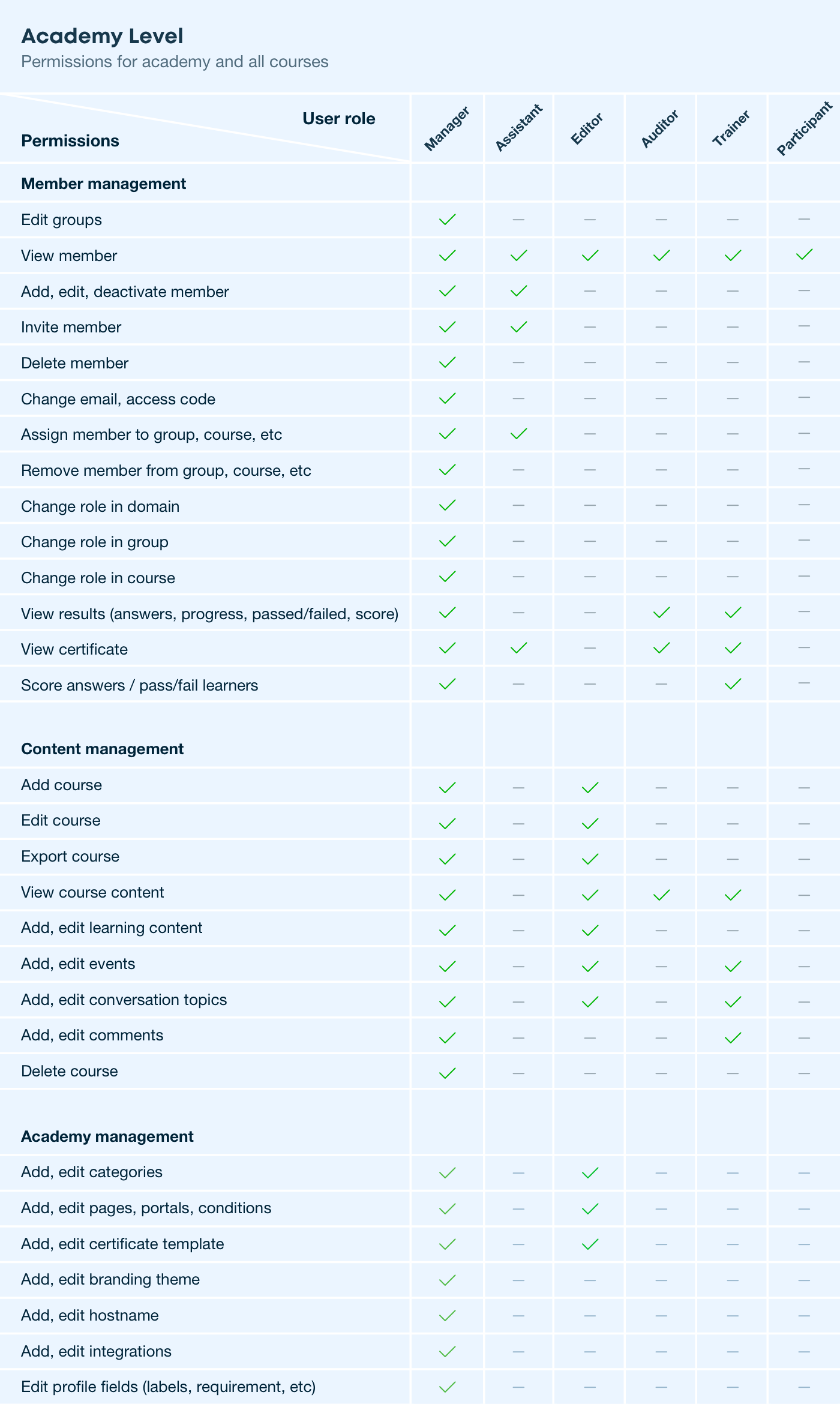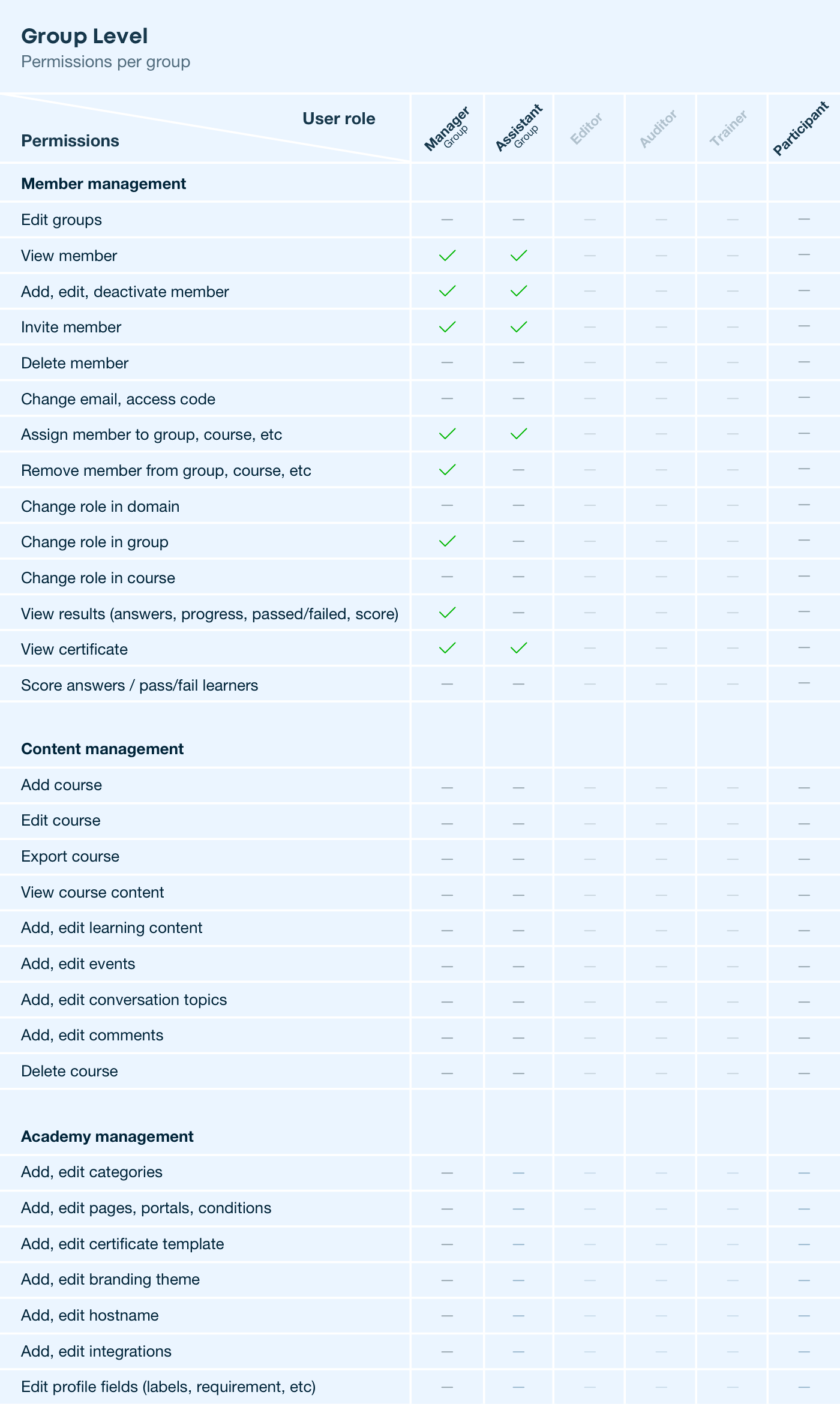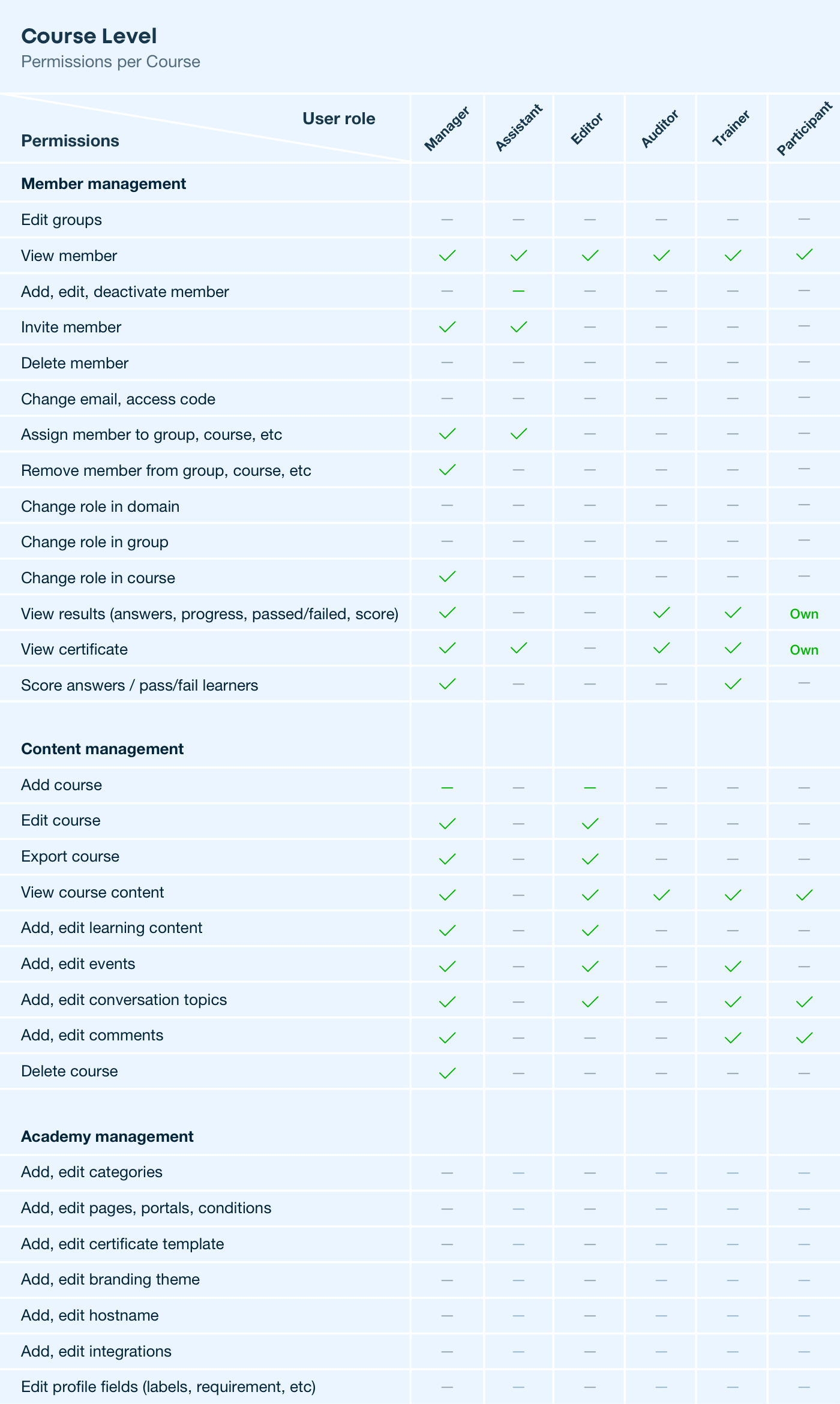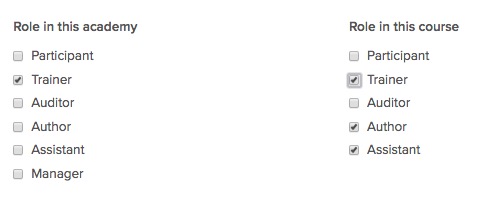Which role gives access to which activities in a Coursepath academy? This article is intended for account managers and administrative staff in Coursepath. It describes the different user roles and permissions in the system.
Division of tasks in Coursepath’s role system

Coursepath uses six roles based on tasks such as user management, course management, auditing and feedback. You can assign roles at academy level and at course level. It is important to note that members can have more than one role.
The following table describe the permissions on Academy level in detail:

The following table describe the permissions on Group level in detail:

The following table describe the permissions on Course level in detail:

Assigning multiple roles to members
There is no limit to the number of roles in an academy. This means you can assign as many manager roles as you need for your e-learning project, internal processes and guidelines. The same applies to the other roles. Also, each member can have multiple roles. This can vary by course. An employee can be a participant at academy level, which allows them to visit all courses that are open throughout the academy. If they want to be able to edit certain courses, they will be assigned the author role for the corresponding course. If they are to have all rights to a certain course, they are assigned the roles of trainer, assistant and author. They do not have these rights to the other courses unless they are assigned these roles at academy level.
How are member roles assigned? Who manages access rights?
Member rights can be viewed on the members' profile pages and changed directly there. Only managers have the necessary access rights.

General principles of the role system
User roles in Coursepath are based on the following principles:
- Clear and meaningful academy management in corporate environments
The access rights and security measures were developed with a focus on the use of online academies in companies. The user roles have a company-like hierarchy. For example, only managers can access system administration and logs. - Adopting security best practices
The user roles in Coursepath are clearly separated from each other. This clear demarcation and the hierarchical levels make it easy to implement and conduct online training in your company.